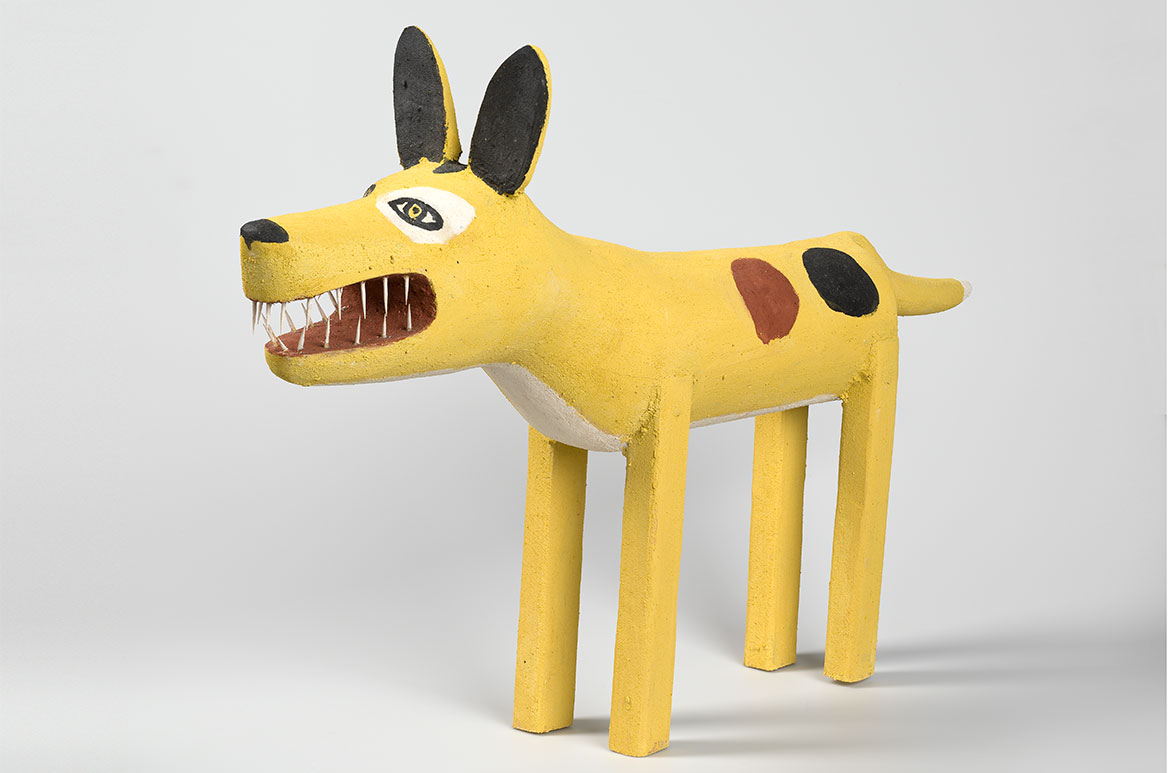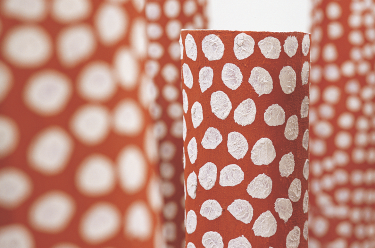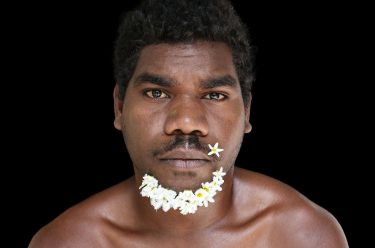Wood carving is an important ceremonial art in Aurukun, a town and coastal locality in western Cape York Peninsula, North Queensland. Major sets of carved icons used in public ceremonies in the 1950s and 60s have been collected and are now housed in Australia’s major museums. The renaissance of art in the community has centred on this traditional practice, and their often quirky portrayals of people and animals that inhabit the stories of the spirit world as well as the physical environment around the western Cape York community.
Craig Koomeeta ‘Ku’ (Camp dog) 2010
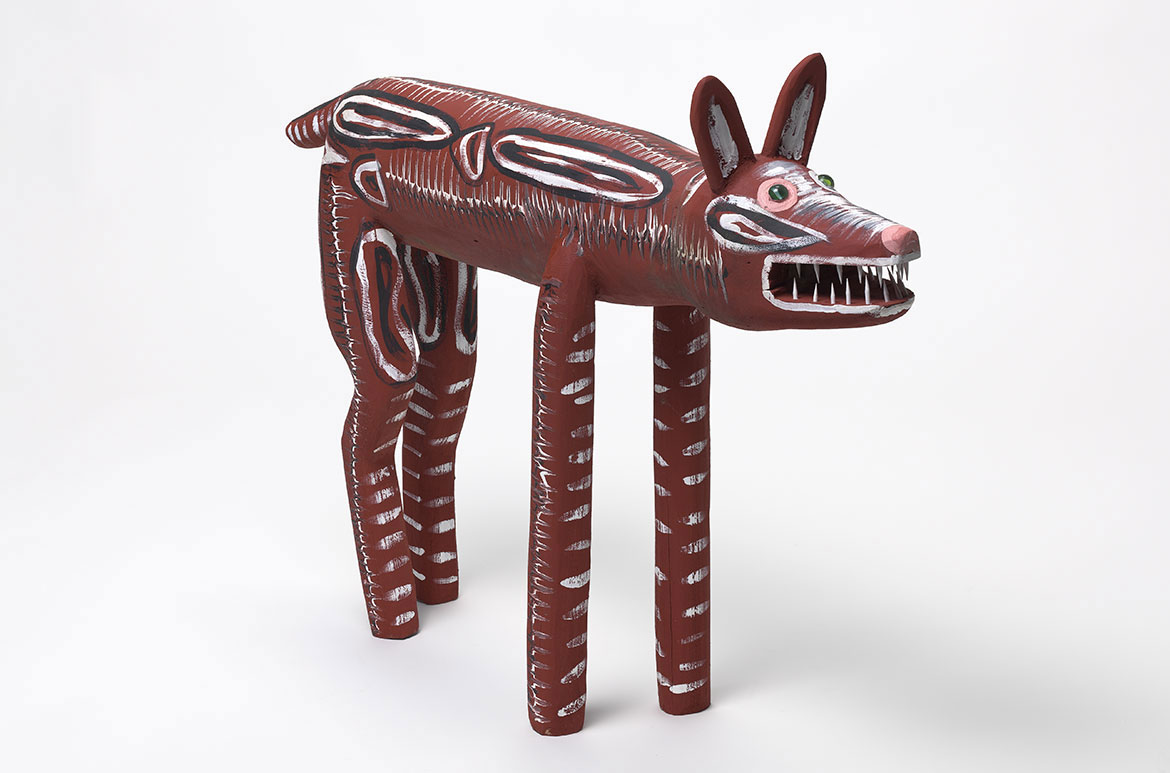
Meet our quirky Aurukun Camp dogs. This group of dogs in the QAGOMA Collection were originally produced over an extended period at the Wik and Kugu Art Centre in Aurukun to be installed at the 2010 Cairns Indigenous Art Fair, where they were the stars of the event. As opposed to religious sculptures belonging to one of the five clans of Aurukun, camp dogs generally belong to everyone, allowing members of all of these groups to collaborate on this exciting, large scale project. Collectively, they are known as ‘camp dogs’ and in Aurukun, have the language name ‘ku’.
This group of ku portrays a pack of the cheeky dogs from the remote western cape community. These ku run the gamut of canine emotions and expressions — the cheeky dog, the snivelling giggler, the overexcited ‘puppy’, the snarling menace, the tall, pretty-coated beauty, the well-fed alpha, the three-legged amputee, the old dog laying in the dust, the flea-ridden ear-scratcher, even one that stands at attention like some Chihuahua-wallaby cross — they are all here. Individually they are compelling, strange creatures, but together, these ku are a commanding pack.
David Marpoondin ‘Sitting ku’ (camp dog) 2009

Craig Koomeeta ‘Dingo’ 2002
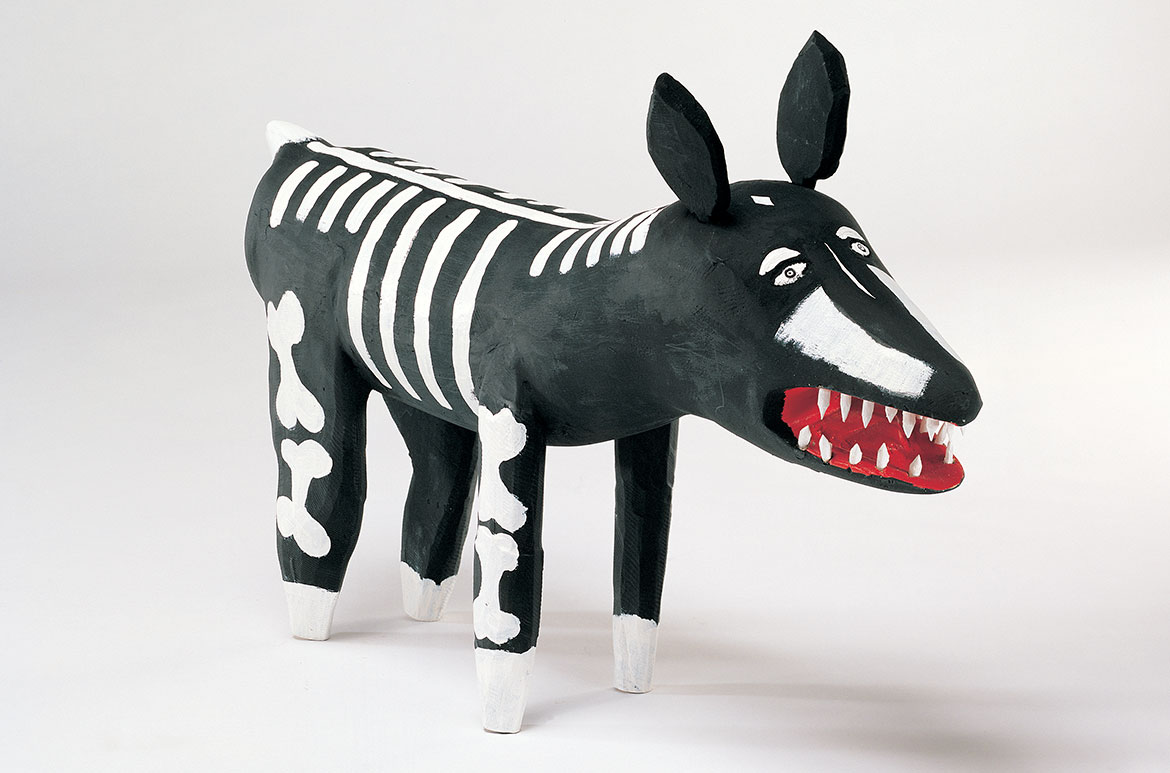
David Marpoondin ‘Ku’ (Camp dog) 2010
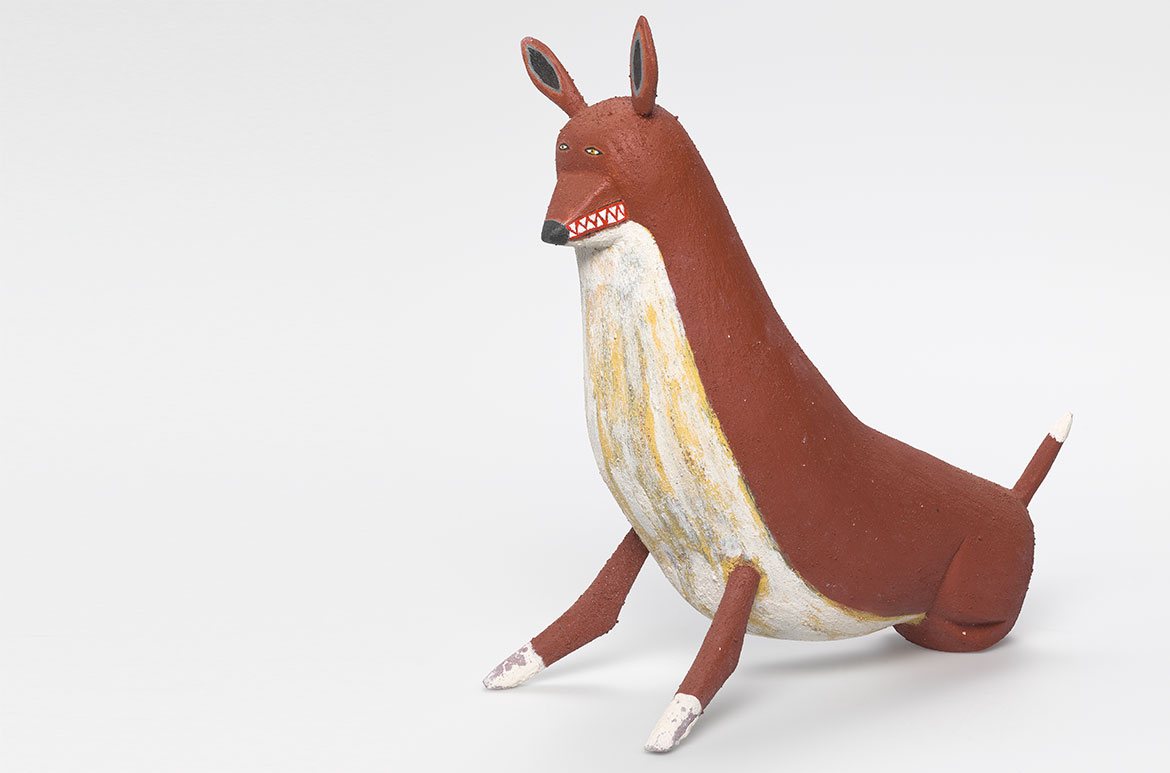
Keith Wikmunea ‘Small ku’ (camp dog) 2010
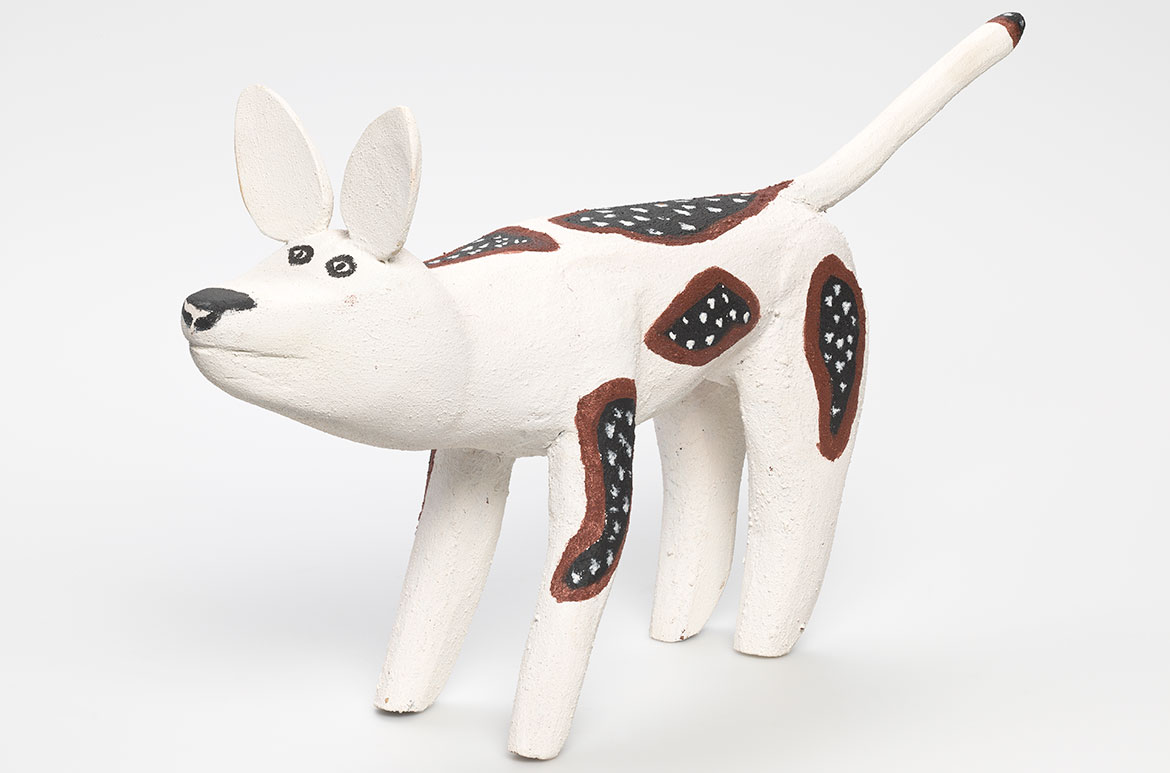
Acknowledgment of Country
The Queensland Art Gallery | Gallery of Modern Art (QAGOMA) acknowledges the traditional custodians of the land upon which the Gallery stands in Brisbane. We pay respect to Aboriginal and Torres Strait Islander elders past and present and, in the spirit of reconciliation, acknowledge the immense creative contribution Indigenous people make to the art and culture of this country. It is customary in many Indigenous communities not to mention the name of the deceased. All such mentions and photographs on the QAGOMA Blog are with permission, however, care and discretion should be exercised.
Featured image: Garry Namponan, Wik-Alkan/Wik-Ngatharr people, Australia b.1960 / Yellow-patched camp dog 2006 / Carved milkwood with natural pigments and synthetic polymer paint / 86 x 50 x 30cm / Purchased 2007. Queensland Art Gallery Foundation / Collection: Queensland Art Gallery | Gallery of Modern Art / © Garry Namponan
#QAGOMA
